Specialities
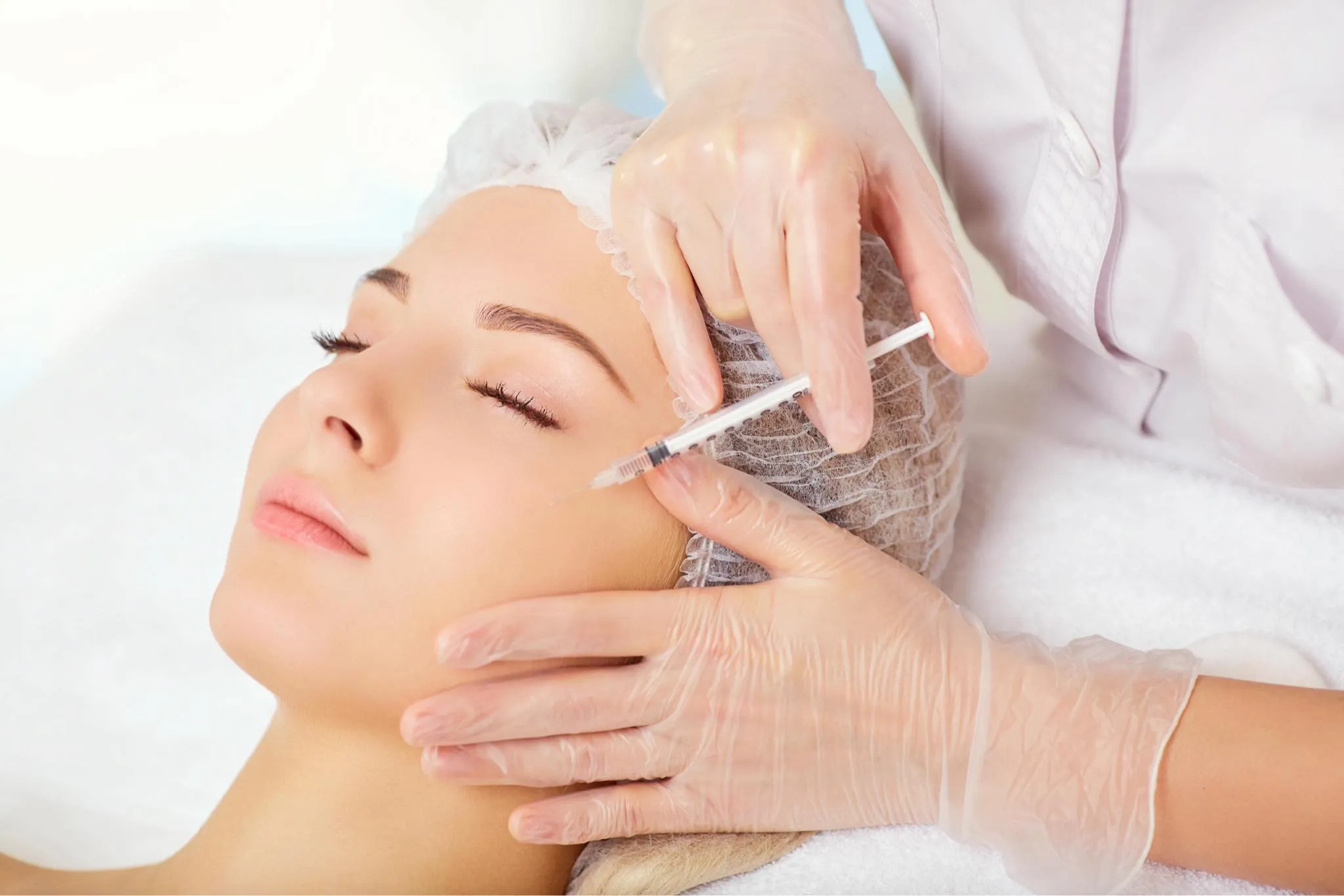
Anti-wrinkle
What is botox and how does it work?
Botox, short for Botulinum toxin, a protein produced by the botulinum bacteria. When used in medical and cosmetic treatments, it is administered in a purified and controlled form. Botox is used in cosmetic medicine for its ability to temporarily reduce the appearance of wrinkles and fine lines by relaxing the muscles responsible for their formation. It can also be used for various medical conditions, including the treatment of muscle spasms, migraines, and excessive sweating.
Which areas are common for botox treatment?
- Glabellar Lines (Frown Lines): These are the vertical lines that form between the eyebrows, also referred to as "11 lines."
- Crow's Feet: These are the fine lines and wrinkles that radiate from the outer corners of the eyes.
- Forehead Lines: Botox can be used to smooth out horizontal lines that form on the forehead when raising the eyebrows.
- Brow Lift: Botox can be strategically injected to create a lifting effect on the eyebrows, reducing the appearance of a heavy or drooping brow.
- Brow Asymmetry: Botox can also be used to correct eyebrow asymmetry, ensuring both eyebrows are more evenly positioned.
- Lip Lines: Botox can be used to reduce the appearance of "smoker's lines" or fine lines around the lips.
- Bunny Lines: These are wrinkles that appear on the sides of the nose when a person smiles or scrunches their nose. Botox can be used to reduce the appearance of these lines.
- Neck Bands: Botox can be injected into the neck to reduce the appearance of vertical neck bands, often referred to as "turkey neck".
How long will the procedure take?
From 15 minutes. Depending on the amount of work needed for the client this may take longer. Especially for comprehensive cases with a combined approach or cases which include multiple areas.
How long does botox last?
Botox typically lasts around 3-6 months. The duration of Botox's effects varies from person to person and can depend on several factors, including the individual's metabolism, lifestyle, the area treated, and the dosage administered. It's important to note that while the effects of Botox are temporary, repeat treatments can help maintain the desired results over time. As the effects wear off, a person may choose to schedule follow-up injections to continue enjoying the benefits of reduced wrinkles.
DYSPORT®
Dysport® is a prescription medicine for the treatment of frown lines, horizontal forehead lines and crow’s fee round the eyes. Dysport has risks and benefits. Ask your doctor is Dysport is right for you. If you have side effects see your doctor. You will need to pay for Dysport, and clinic fees will apply. For details on precautions & side effects consult your healthcare professional or the Consumer Medicine Information (CMI) at www.medsafe.govt.nz Dysport lasts about 4-6 months and further courses of treatment may be necessary. Should only be administered by trained medical professionals. Contains 500 units of clostridium botulinum Type A toxin. Galderma (NZ) Limited, Auckland.
XEOMIN®
Xeomin® is a Prescription Medicine containing 50, 100 units of incobotulinum Type A, purified Botulinum toxin type A complex for injection. It is used for the treatment of frown lines on the forehead, lateral periorbital lines and horizontal forehead lines in adults. It should be administered only by trained medical professionals. Talk to your specialist about the benefits/risks of this procedure in appearance medicine. Xeomin treatment lasts about four months and further courses of treatment may be necessary. Cautions: people receiving blood thinning medicines, care at the proposed injection sites, pregnancy and lactation. Possible side effects: headache, pain, swelling or infection at injection site, local muscle weakness including drooping eye lids, lack of feeling & nausea. Treatment last for up to 4 months.
BOTOX®
Botox® is a prescription medicine for the treatment of frown lines , horizontal forehead lines and crow’s feet round the eyes. Botox® has risks and benefits. Ask your doctor if Botox is right for you. If you have side effects, see your doctor. You will need to pay for Botox® and clinic fees will apply. For details on precautions & side effects consult your healthcare professional or the Consumer Medicine Information (CMI) at www.medsafe.govt.nz . Botox® treatment lasts about 4 months and further courses of treatment may be necessary. Should only be administered by trained medical professionals. (contains botulinum toxin A 50,100 & 200 units) Allergan (NZ) Limited, Auckland.
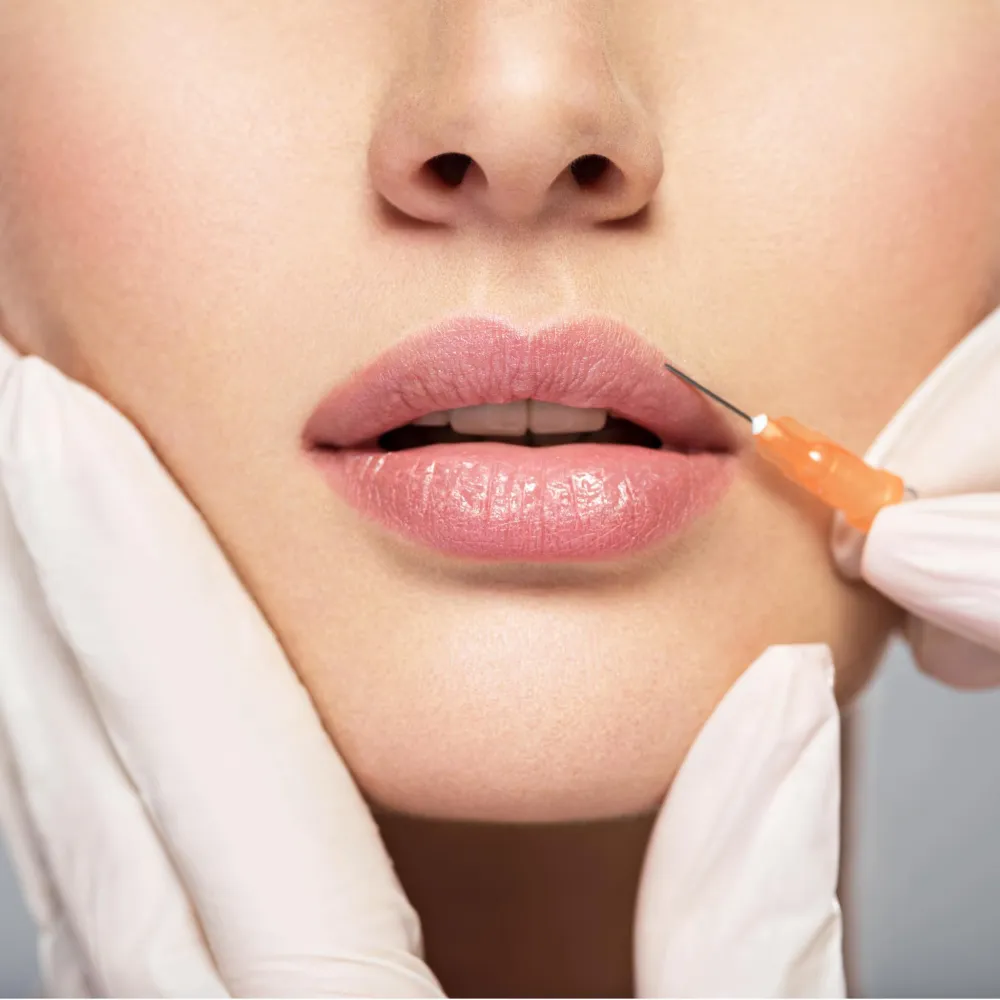
Dermal Filler
What is dermal filler and How does it Work?
Dermal fillers are a non-surgical cosmetic treatment used to enhance and rejuvenate the appearance of the face. They consist of injectable gels or substances that are typically composed of hyaluronic acid, collagen, or other biocompatible materials. The way dermal fillers work is by replenishing lost volume beneath the skin. As we age, our skin loses natural substances like collagen and hyaluronic acid, leading to wrinkles and sagging. By targeting specific areas of the face, dermal fillers can restore volume, smooth wrinkles, enhance facial contours and reduce the signs of ageing.
Which areas are common for dermal fillers?
- Nasolabial Folds: These are the lines that run from the sides of the nose to the corners of the mouth, often referred to as "smile lines."
- Marionette Lines: These lines extend from the corners of the mouth downward, giving the appearance of a marionette's mouth.
- Lips: Dermal fillers can be used to add volume and definition to the lips.
- Cheeks: Fillers can be applied to the cheeks to restore lost volume and create a more youthful contour.
- Under-Eye Hollows or Tear Troughs: Dermal fillers can reduce the appearance of dark circles and hollow areas under the eyes.
- Jawline: Fillers can help define and contour the jawline, providing a more sculpted appearance.
- Chin: Fillers can be used to enhance the chin's projection and balance facial proportions.
- Temples: Dermal fillers can add volume to sunken or hollow temples, which can help create a more youthful look.
How long will the procedure take?
From 30 minutes. Depending on the amount of work needed for the client this may take longer. Especially for complete facial sculpting cases.
How long do fillers last?
There are many brands of dermal fillers and they typically last 8-12 months, however some products could last up to 24 months. The duration that dermal fillers last in the body also depend on individual metabolism and lifestyle.
TEOXANE
TEOSYAL RHA® 2, TEOSYAL RHA® 3, TEOSYAL RHA® 4, TEOSYAL® PURESENSE REDENSITY 2, and TEOSYAL® PURESENSE ULTRA DEEP are trademark of the firm TEOXANE SA. These products are gel that contains hyaluronic acid, and 0.3% by weight of lidocaine hydrochloride (local anaesthetic can induce a positive reaction to anti-doping tests). In the case of known hypersensitivity to lidocaine and/or amide local anaesthetic agents, we recommend not use lidocaine-containing products and please refer to products without lidocaine. They are class III medical device and are regulated health product bearing the CE marking (CE2797) under this regulation. Local manifestations: inflammatory reactions (erythema, oedema, pain at the point of injection), haematomas, itching, temporary loss of sensitivity around the injected area, dyschromia, abscesses, indurations, nodules (possibly granulomas). General manifestations: immediate hypersensitivity up to anaphylactic shock, migration of the implant. Rare but serious adverse events associated with the intravascular injection of soft tissue fillers in the face have been reported and include temporary or permanent vision impairment or blindness, skin necrosis and stroke. Please consult your physician or pharmacist for more information. Please refer to instructions for use.
STYLAGE
Stylage S Lidocaine (16mg/mL), Stylage M Lidocaine™ (20mg/mL), Stylage L Lidocaine™(24mg/mL), Stylage XL Lidocaine™(26mg/mL), Stylage XXL™(21mg/mL), are medical devices Class III for the filling of medium size and deep facial wrinkles by injection into the skin and for creating definition and volume in the lips. Contains transparent cross-linked sodium hyaluronate gel of non-animal origin with lidocaine 0.3% to reduce local pain. Cautions: people with autoimmune disease, or who are pregnant, breastfeeding, under 18 years of age or have an increased susceptibility to keloid formation and hypertrophic scarring. People on blood thinning medicines. Possible side effects: injection site inflammatory reactions (redness/swelling, itching/pain on pressure) induration or nodules; discolouration. You will need to pay for this product and doctor’s fees apply. If you have side effects or concerns speak to your practitioner. Distributed by EnVogue Skin NZ Pty Ltd.
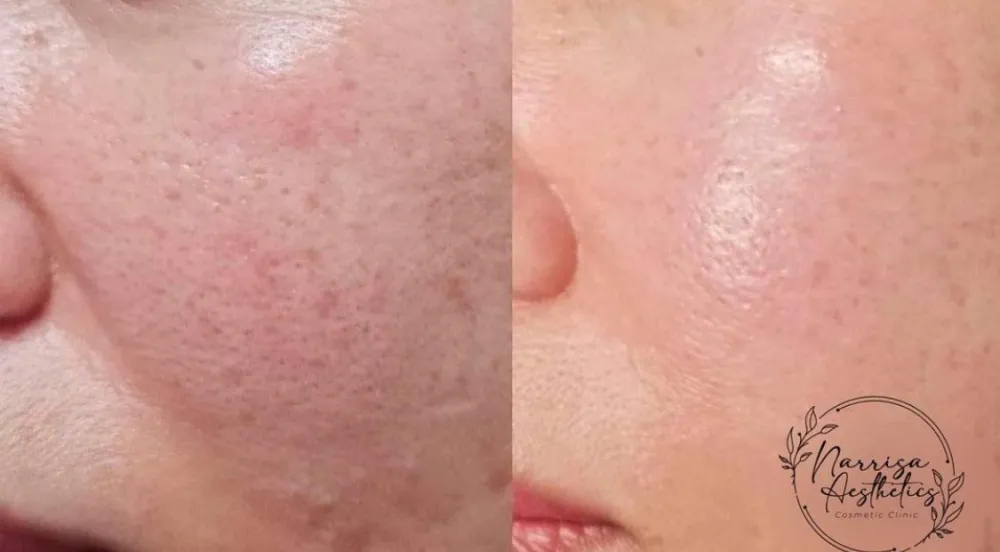
Skin Boosters
What are skin boosters and how do they work?
Injectable skin boosters are designed to hydrate and improve the overall quality of the skin. There are many different formulas of skin booster serum often containing ingredients such as hyaluronic acid, vitamins, amino acids, and antioxidants. Overall skin boosters are used to enhance skin hydration, elasticity, and texture.
Which areas are common for skin booster treatment?
Skin boosts are typically administered all around the face however there are also specialised skin boosters formulated for specific areas such as under-eye skin boosters which work to eliminate dark under-eye circles.
Injectable skin boosters are versatile and can be tailored to address specific concerns even in other regions such as the neck and hands. The choice of areas for treatment depends on individual needs and desired outcomes. Please book a free consultation to determine the most suitable treatment plan for you.
How long will the procedure take?
It takes around 30 minutes to administer skin boosters all around the face.
How long do skin boosters last?
The duration of the effects of injectable skin boosters can vary depending on the product used, individual metabolism and lifestyle. Generally, in order to maintain the benefits of skin boosters, treatments every 3-6 months are recommended.
FILMED
ART FILLER® Fine Lines: Fill in fine lines, superficial lines and small skin folds of crow’s feet, forehead, upper lip and cheeks; ART FILLER® Volume: Restore volume to the mid-face, jawline and temples; ART FILLER® Universal, ART FILLER® Lips and ART FILLER® Lips Soft: Fill medium and deep nasolabial folds with or without marionette lines dermis, increase the volume of lip and enhance the lip outline. Class III medical devices (CE0123). NCTF® 135HA is an anti-ageing injectable product indicated for intense revitalization and hydration of tired or dull skin, filling of superficial wrinkles and redensification of mature or slack skin. Class III medical devices (CE0297). M-HA®10 is a visco-elastic solution aimed at restoring the loss of hyaluronic acid due to skin ageing. It is designed to be injected into the upper dermis to improve the hydration, radiance and elasticity of the skin and to serve as a filling agent for small wrinkles such as crow’s feet, laughter lines or lines around the mouth caused by smoking. Class III medical devices (CE0297). M-HA® 18:The device is a viscoelastic solution to replenish the loss of hyaluronic acid due to ageing, to maintain hydration, to improve tone and elasticity of the skin and to act as a filler for small lines such as crow’s feet, smile lines or smoke lines surrounding the mouth. It is indicated to be injected into the superficial dermal tissue. Manufacturer: CROMA GmbH. Class III medical devices (CE0123). BIONUTRILIFT® cannulas: Device intended for the injection of dermal fillers. Manufacturer: Soft Medical Aesthetics. Class IIa medical devices (CE0459). NANOSOFT: indicated for intradermal injection by microneedles. Manufacturer: NanoPass Technologies Ltd. Class IIa medical devices (0344). These medical devices are regulated health products that bear the CE mark under this regulation. A treatment with a filling product may require several touch-ups over time to achieve the desired correction. The use of these products requires the intervention of a health professional, ask your doctor for advice. Treatment with medical devices can have undesirable effects.
PROFHILO®
Profhilo®, containing low & high molecular weight hyaluronic acid, is a Class III medical device for the treatment of the face and body for contours redefinition and laxity remodelling where skin laxity is a problem. Profhilo has risks and benefits. Do not use with treatments such a laser resurfacing or medium deep skin-peeling. Caution in people on blood thinning medicines. Do not inject into inflamed areas or intravenously or intramuscularly. Possible side effects: pain and swelling at injection site. Accelagen Pty. Ltd. Whanganui.
SCULPTRA®
SCULPTRA® is a poly-L-lactic acid implant liquid that is injected by a healthcare professional into or below the skin to increase volume of depressed areas, particularly to correct skin depressions. Class III Medical Device. Sculptra® may also be used for large volume restoration and/or correction of the signs of facial fat loss. Sculptra® has risks and benefits. Sculptra® treatment may result in injection site reactions and pain. Ask your healthcare professional to explain the range of possible side effects and tell them if any side effects concern you. Sculptra® should not be injected into skin that is inflamed or infected. Exposure to excessive sunlight or UV lamp exposure should be avoided until redness or swelling has resolved. Sculptra® is not recommended for people taking blood thinning medicines and has not been tested in pregnant or breast-feeding women or those aged under 18 years. Lasts for 12-25 months. ALWAYS FOLLOW THE INSTRUCTIONS YOU ARE GIVEN. Galderma Australia, Sydney. Distributed by Healthcare L.
SUNEKOS®
Sunekos containing hyaluronic acid and amino acids is a class III medicaldevice that modifies the structure of mature skin, restoring volume, fillingwrinkles and folds in the skin and in scar sites. Sunekos has risks andbenefits.Sunekos should not be used on patients: with known hypersensitivity toany of its components; presenting with a general infection, inflammationor irritation in the area to be treated; or in patients predisposed tocoagulation disorders.A local reaction may rarely occur, caused by hypersensitisationphenomena, with symptoms that include oedema and sensation ofburning and/or itching. These reactions normally resolve within two days.Consult your healthcare professional to see if Sunekos is right for you. For more information refer to the instructions for use.New Zealand Sponsor:AA-Med Pty LtdDistributed by:Xytide Biotech NZ Pty LTD.

Skin Brightening
What are skin brightening injections and how do they work?
Skin brightening injections, also known as skin whitening or lightening injections, are a type of cosmetic treatment aimed at reducing skin pigmentation, addressing hyperpigmentation concerns, and promoting a more even skin tone. These injections typically involve the administration of substances that can inhibit melanin production or interfere with the activity of melanocytes, the cells responsible for producing melanin.
Which areas are common for skin brightening treatment?
Skin brightening treatments are commonly used on various areas of the body to promote a lighter, more even skin tone. Common areas for skin brightening are areas which are exposed and visible in day to day life such as:
- Face & neck
- Shoulders, back & arms
- Upper chest & torso
- Legs
- Dark underarms, elbows & knees
How long will the procedure take?
From 30 minutes. Depending on the size of the treatment areas this may take longer.

Fat Dissolving
What are fat dissolving injections and how does it work?
Fat dissolving injections are a non-surgical cosmetic procedure designed to reduce localised fat deposits in specific areas of the body. These injections contain substances that break down fat cells to be metabolised and eliminated by the body, leading to a more contoured and sculpted appearance.
Which areas are common for fat dissolving injections?
Fat dissolving injections are commonly used to target stubborn pockets of fat in areas where diet and exercise have limited impact. Some common areas for fat dissolving injections include:
- Under the chin: Fat dissolving injections can be applied to reduce the appearance of a double chin, creating a more defined jawline.
- Upper Arms: Fat dissolving injections may help reduce fat in the upper arms, commonly known as "bat wings."
- Belly & Abdomen: Fat dissolving injections in the belly and abdomen are particularly effective for individuals who have stubborn fat in this area that doesn't respond well to diet and exercise.
- Bra Bulge & Back Rolls: Fat dissolving injections may be applied to reduce the appearance of fat which overflows around the bra line and back.
- Flanks (Love Handles): Fat dissolving injections can be applied to reduce excess fat on the sides of the torso, commonly known as love handles.
How long will the procedure take?
It depends on the area. The most common area targeted for fat dissolving is under the chin, this takes around 30 minutes. For larger areas such as the belly and abdomen this could take up to an hour.
How long does fat dissolving treatment last?
Fat dissolving injections target and break down the fat in the localised area. For cases where this is an excess amount of fat this may take more than one injection to achieve the desired results. Fat dissolving injections do not prevent the formation of fat cells in the future, therefore, in order to maintain results, fat dissolving treatment should be combined with an appropriate diet and exercise regiment.
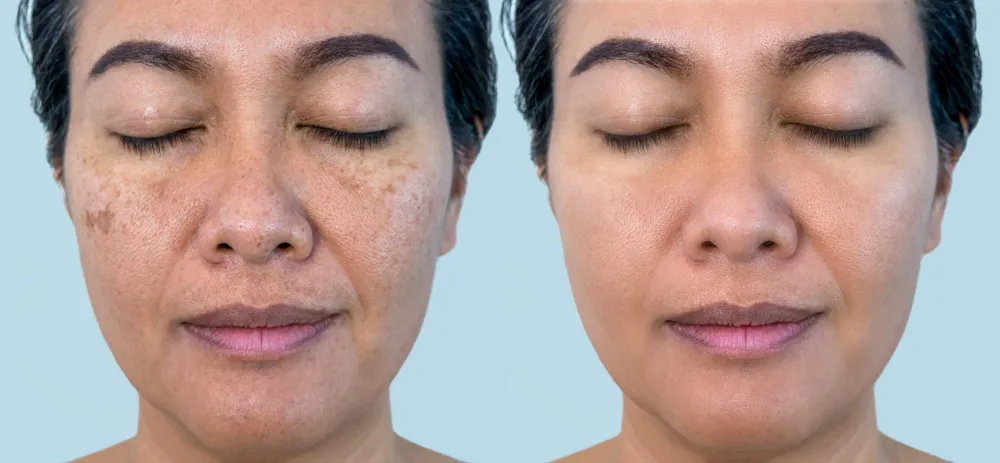
Pigmentation Treatment
What is pigmentation treatment and how does it work?
Injectable pigmentation treatments are designed to reduce the appearance of hyperpigmentation, such as dark spots, sunspots, or melasma. The injections may contain various substances, including depigmenting agents or skin-lightening ingredients, to target and minimise pigmentation irregularities.
Which areas are common for pigmentation treatments?
Injectable pigmentation treatments are used to address localised hyperpigmentation concerns in specific areas of the skin, typically in areas which are visible in day to day life. Common areas for these treatments include:
- Face & neck
- Shoulders & back
- Upper chest
- Arms & legs
How long will the procedure take?
Depending on the size of the area, it could take from 30 minutes for the face and neck or up to an hour for shoulders and back. For cases which include a combination of areas around the body this could take more time.
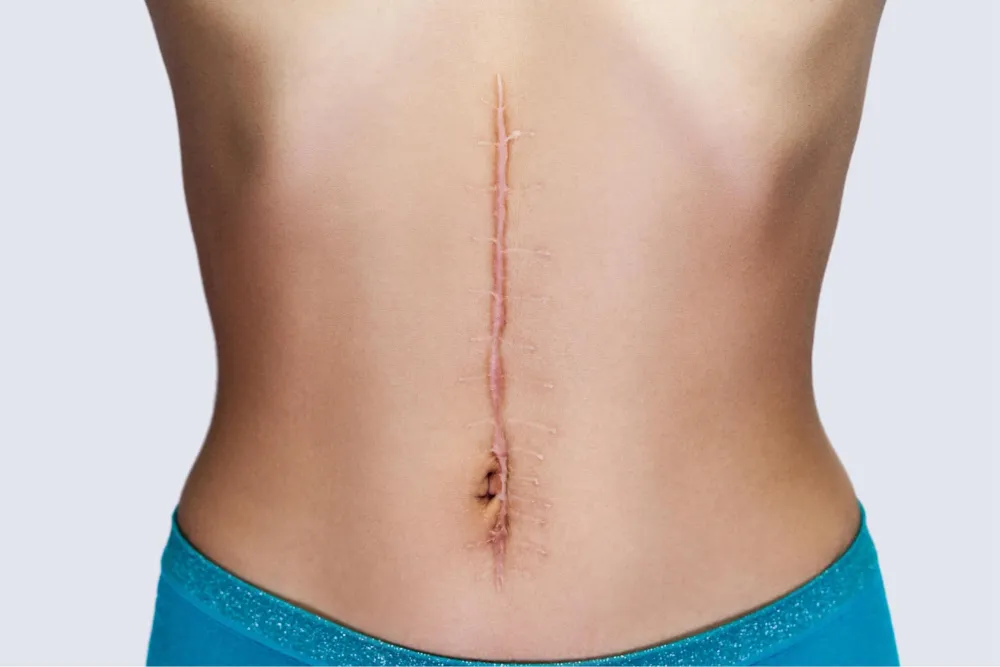
Keloid Treatments
Keloid scars and hypertrophic scars form as a result of your own individual healing response that over generates more collagen than is needed to repair the injury. This leads to a red raised lumpy scar. There is no real reason you might do this more than others but tends to more common if you have
- Family history of keloid scaring
- Darker or pale skin types
- Chronic wounds that keep getting injured in same place
- Reactions to tattoos, ear piercings, surgery wounds
- Injuries to certain skin body areas such as lips, chest and shoulders.